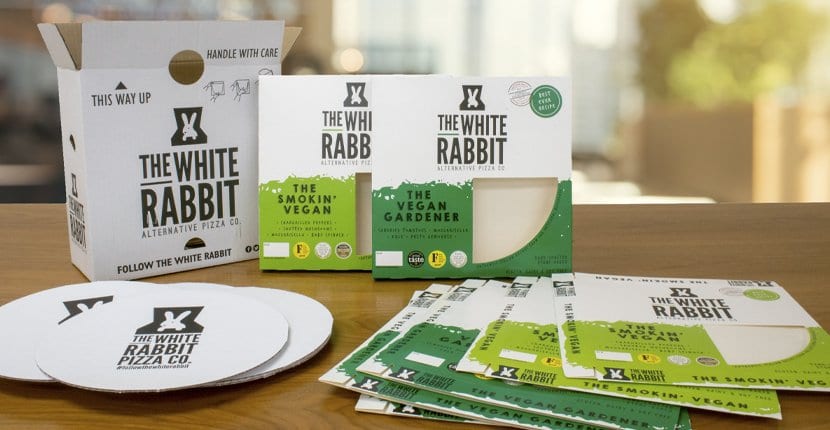An ideal food packaging solution encompasses a well-built balance between branding and material use. A significant part of this process is the branded printing, which makes your food product attractive for your customers. The quality of prints also depends on the packaging material you use. High-quality packaging materials allow for fine printing, which showcases your brand positively.
In this article, we will discuss the food packaging strategy used by White Rabbit Pizza Co. They use a variety of boxes to pack pizzas of different sizes. The branded printing they use has allowed them to achieve favorable results in the industry.

Packaging for White Rabbit Pizza Co
Here is an overview of packaging solutions that White Rabbit Pizza Co. uses to pack its gourmet pizzas.
Corrugated pizza boxes and discs
The ready-to-use corrugated boxes that people at White Rabbit Pizza Co. use to pack their pizzas allow for great food protection and unparalleled branding. They also use corrugated discs of different sizes with varying fluting options to facilitate fridge or freezer use. These discs use one-colored flexogenic print.
Machine Erect Retail Boxes
With increasing sales, the company had to deal with the challenge of erecting boxes to pack pizzas. The use of machine erect retail boxes allowed the White Rabbit Pizza Co. to speed up the packaging process significantly. The company ordered a carton board material to ensure safe food delivery and storage.
All White Rabbit Pizza Co. boxes use high-quality prints that allow for a more effective branding and clear display of product information. Since they had to order several boxes for pizza packaging, litho printing turned out to be the best option for them.
Corrugated shelf-ready display
To pack their products that had to go to supermarket chains, White Rabbit Pizza Co. used corrugated shelf-ready packaging. The purpose of shelf-ready packaging is to ensure safer delivery of the product and its quicker transition to the shelf. This packaging method essentially eliminates the need to unpack and restack.
Shelf-ready packaging is customizable just as other packaging options. You can choose from several packaging designs, styles, and sizes to meet your product packaging and showcasing requirements.
Types of packaging
Here are the types of packaging materials to consider when it comes to food packaging. These types include primary, secondary, and tertiary packaging.
- Primary or consumer packaging is the innermost packaging layer that comes in direct contact with the product. This packaging layer protects the product and displays important information. White Rabbit Pizza Co. used pizza disc and wrap as primary packaging supplies. These packaging materials protect their pizzas and other products during refrigeration.
- Secondary packaging protects the primary packaging of a product. The purpose of this packaging layer is to provide optimum protection to the product during transit while enhancing shelf appeal. White Rabbit Pizza Co. places their wrapped pizzas in retail boxes. These boxes have branded designs and important information about the product printed on their outer surface.
- Tertiary is the outermost packaging to ensure product protection during transit. The shelf-ready packages used by White Rabbit Pizza Co. are an example of tertiary packaging.

